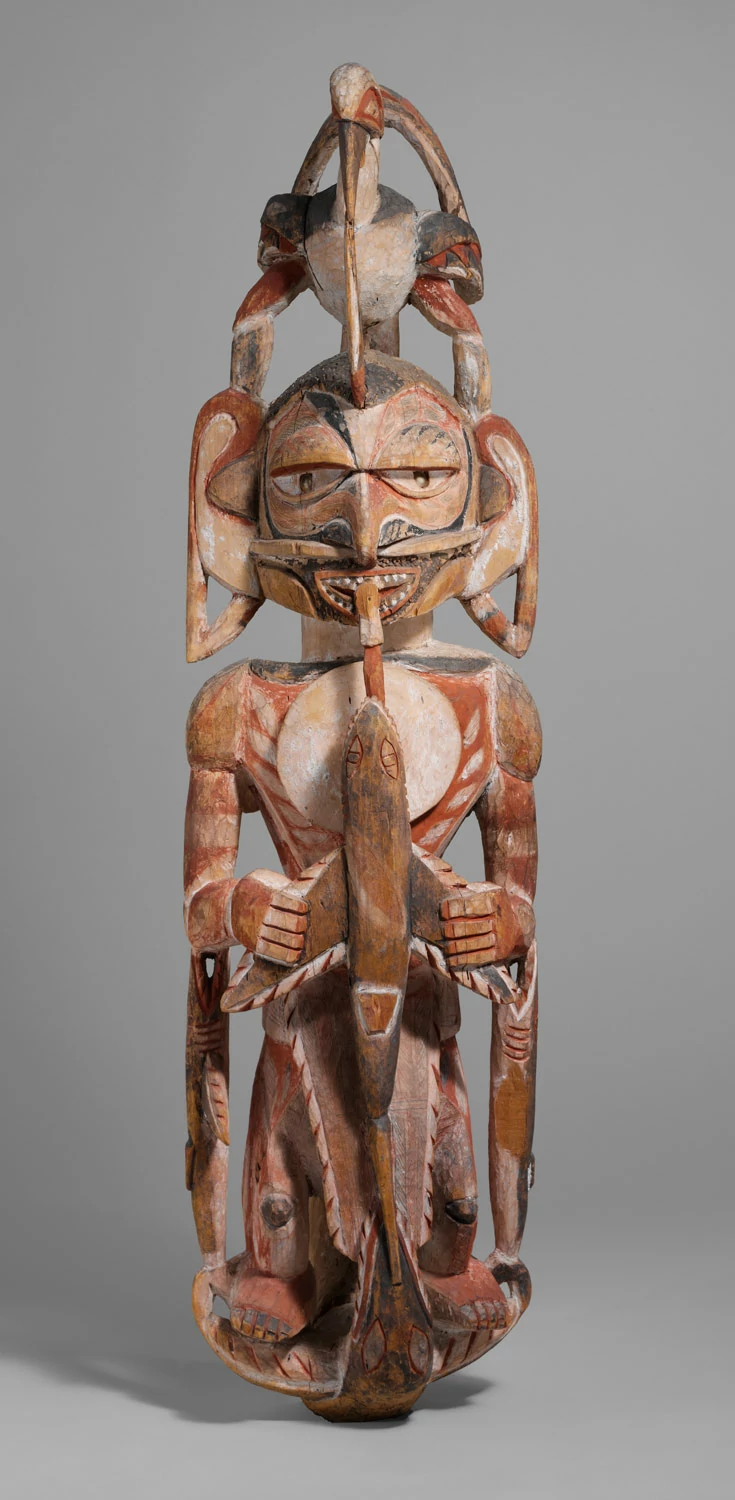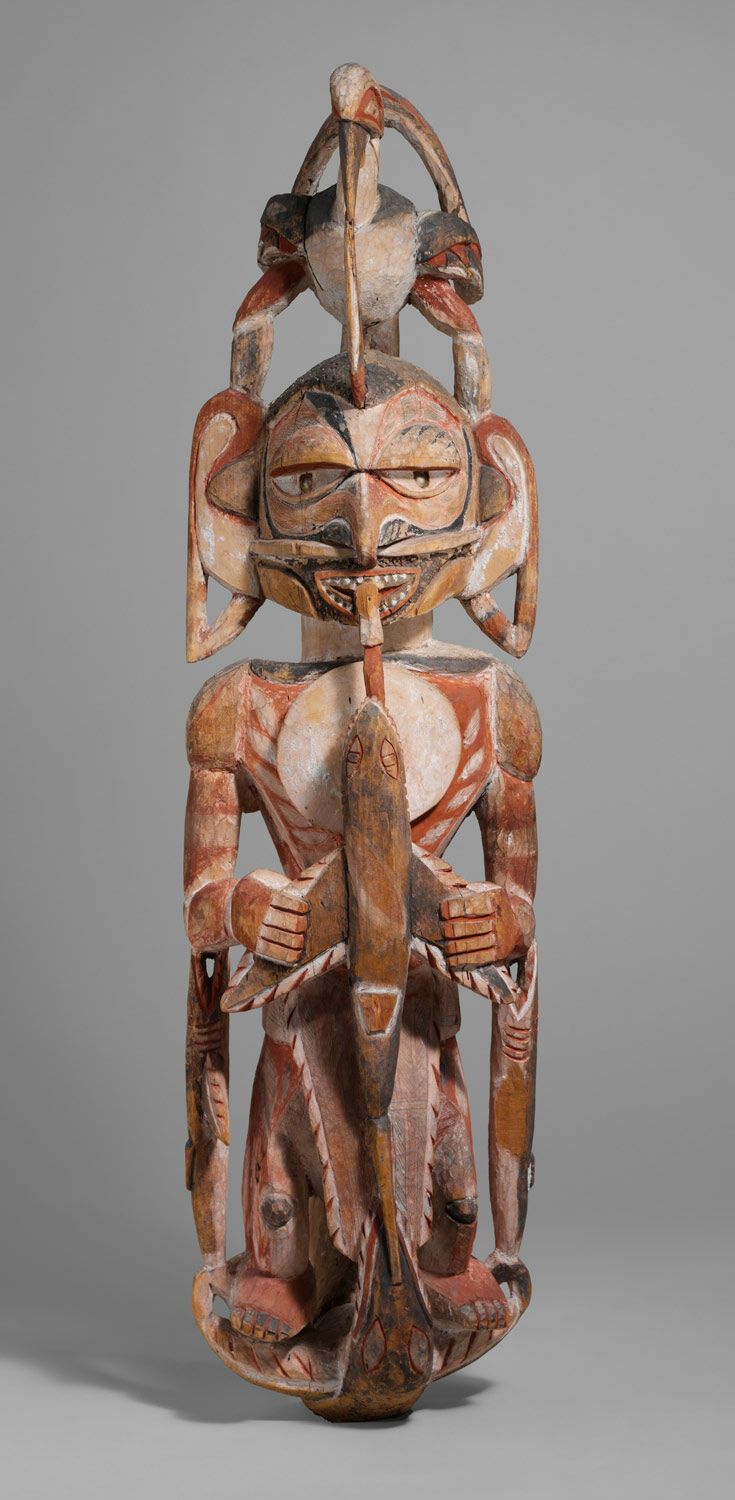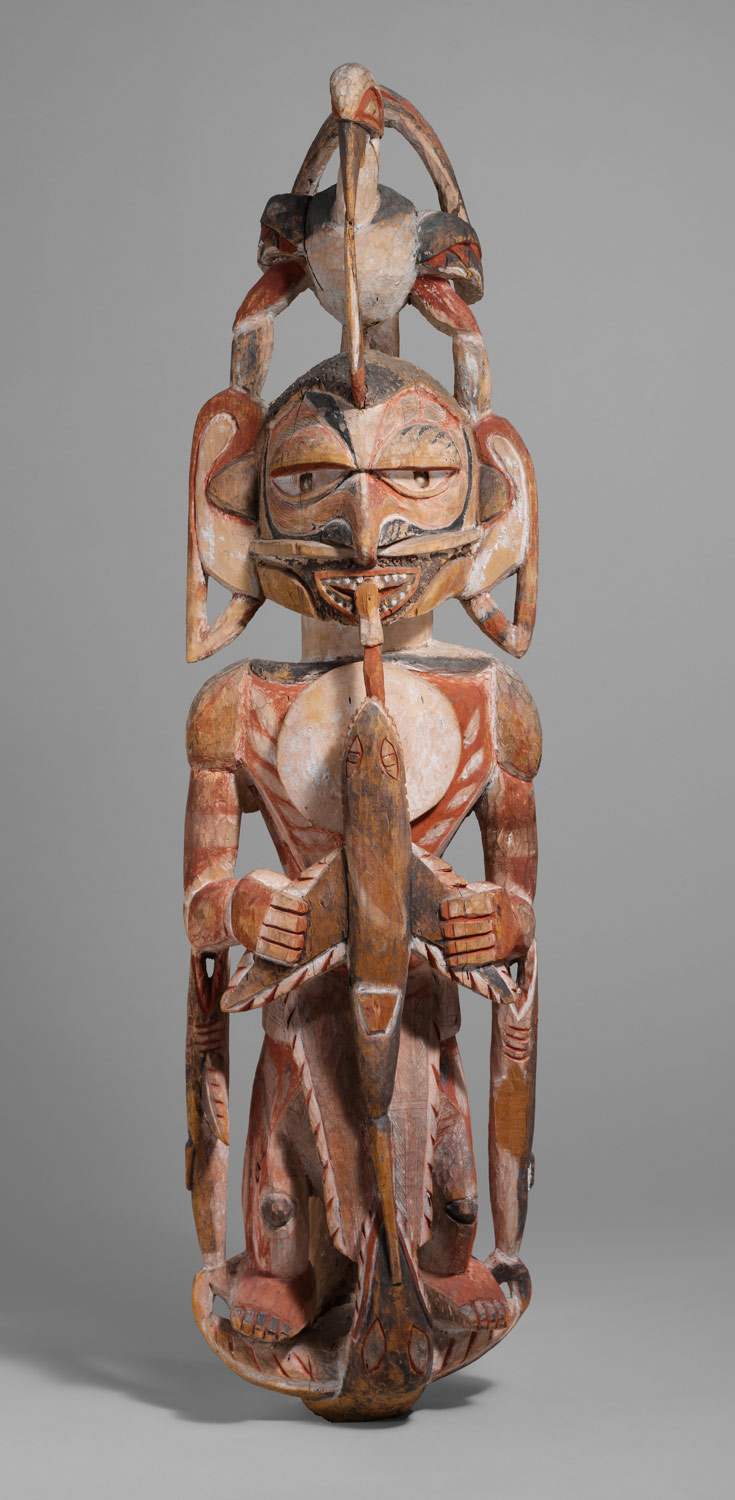


In the New Ireland province of Papua New Guinea, death brings people together. At the start of the equatorial dry season, communities come together in the name of one or more recently deceased members for the multi-day malagan ceremony. The ceremony is planned by the families of the deceased, who prepare for months or even years, but the event both commemorates the lives of the passed and brings multiple clans together, becoming a forum to make community announcements, repay debts, resolve disputes, and exchange a traditional currency called mis.
In the final moments of the event, the centerpiece of the ritual is revealed—the malagan carvings. Totems taking the form of masks, house poles, woven mats, or models of dugout canoes piloted by carved figures, the malagan are prepared in secret by craftsmen before the event. Each malagan bears a dense network of symbolic imagery that represents the life achievements of the deceased.
When the malagan carvings were revealed, they were dangerous, hot with the power of the departed. The mourners ‘bought’ the malagan with mis to diffuse their energy, and when the feasting was over and the sun set, the carvings were tossed into the woods to rot. The departed spirits were released from this world, and their relatives were freed from their obligations to the dead.
